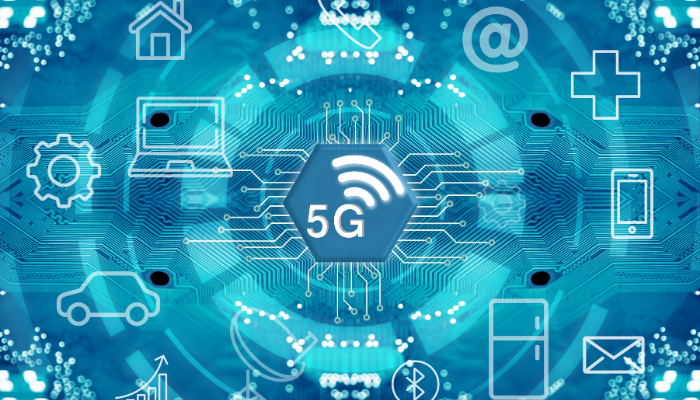These days, it seems that all people can talk about is 5G technology and how it will change the world. For those that don’t really quite understand the magnitude of what 5G means, then you’ve come to the right place.
Today, we will explore the capabilities of 5G technology, various benefits, and how cybersecurity ties into all the hoopla (you didn’t think that we’d forget about cybersecurity, right?).
What is 5G?
If you do a quick Google search, you’ll probably find a glut of information detailing about 5G and the technical aspects of why this is so good, so we’ll try to keep things as simple as possible.
First off, to keep things simple, the ‘G’ in 5G, 4G, 3G, etc. all stand for “Generation.” Essentially, they are upgraded versions of wireless signal strength and speed at which data can travel.
For newer generations (reminder: the higher the G the better), such as 5G, this type of wireless signal will be capable of pushing data at peak speeds that are more than 20 times faster than 4G.
In terms of latency, which is a fancy term for data communication delays, 5G is more than 100 times faster than 4G.
Pretty much this means that 5G will have virtually zero chance of ever experiencing random drop times or speed slowdowns that plagues 4G networks right now.
If you thought your 4G mobile speed was already lightning fast, then you’re in for quite a ride with 5G.
To help you better understand just how fast 5G can actually be, here is a quick overview of the time it would take for different wireless generations to download a standard HD movie (roughly 3GB file size) according to Lifewire:
- 3G: 1 hour and 8 minutes
- 4G: 40 minutes
- 4G LTE: 27 minutes
- 5G: 35 seconds
As you can see, the jump in data speeds are quite stark. Add in the fact that the network connection will always be stable and connected, then we have some pretty powerful stuff on our hands.
But do we actually need this kind of ridiculous speed in our lives? The answer is YES!
What Will 5G Be Used For?

Now that we understand just how fast 5G actually is, then we can understand why we need this in our lives (no, it isn’t for you to download Netflix movies really fast, although most people will use it for that exact reason).
5G actually will serve a major purpose in our lives and that will come in the form of the Internet of Things (IoT).
IoT is essentially a technology that enables us to connect all of our devices, appliances, vehicles, and even our homes to the internet. Check our previous blog post where we discuss this more in depth.
Wait, but can’t we already connect these items to the internet through 4G? Yes, this is indeed true, but 4G would really be limited to simple data retrieval like updating the weather, downloading new GPS maps, etc.
This is due to the fact that 4G’s maximum throughput (another fancy schmancy term for maximum data flow through the internet and your devices) peaks around 1 Gbps (gigabits per second) while 5G hits the 20 Gbps range.
Why is this even important? Well, this is what makes 5G the true difference maker in taking IoT to a whole different realm of possibilities.
Since 5G has much faster speeds and low latency connections, now we can really make dreams of autonomous driving vehicles, remotely controlled machines, or even online surgeries completed by doctors from around the world. The last one is a bit of a ways away, but it’s certainly within the realm of possibility.
Here’s an example of how South Korea is showcasing its 5G capabilities. The video below shows how companies in the future could begin remotely controlling heavy machinery at dangerous sites with 5G’s low latency and high speeds.
This could forever change how companies operate by enabling true experts to handle complex machines all without leaving their bedroom or even coming close to risking their lives.
Where Does Cybersecurity Fit?
As quick as we can imagine the amazing possibilities that 5G technology could provide, we need to really consider the dangers that come with such power. The biggest elephant in the room for future IoT devices connected by 5G technology will be the threat of cyber hackers.
Imagine a scenario where your loved one is having surgery performed remotely by one of the world’s most accomplished surgeons that is located halfway around the world. This situation could go one of two ways. It would either be a truly world changing event or it could simply be a disaster waiting to happen.
The scary part is that since remote connection only requires a connection to the internet, then this automatically leaves us exposed and vulnerable to cyber attacks. We don’t even want to think of the issues that could spring up if a hacker could maliciously take over a remote surgery in the future.
Now, the even scarier part is that since the rollout of 5G is still in its infancy, the thought of cybersecurity has not really crossed the minds of manufacturers and technology providers.
This could lead to a situation where a major hacking episode will scare everyone straight and bring a high priority red flag towards integrating cybersecurity. But we are here today to argue that cybersecurity needs to be just as important as the underlying technology here.
The issue is that most of these connections and data will be passed through new communications protocols. For instance, data travelling from an automobile will not rely on the same protocols as a simple blog about your favorite travel destinations.
This poses problems for many cybersecurity vendors who are at a disadvantage in protecting this fast growing market.
How Cloudbric Can Help
By leveraging our years of award winning web application security experience, as well as the development of new IoT based threat detection systems, we hope to shift the importance of cybersecurity into the IoT future.
Throughout time the internet has been somewhat disjointed from our lives. Back in the early days of the internet, users had to connect online through dial up services. As we continued to progress with connectivity, the closest the internet has come into our lives is through our mobile phones.
However, the future will be quite different once internet connected automobiles, household appliances, heavy machinery, etc. becomes a much more polished and prominent technology in our lives. This calls for a much higher need for cybersecurity to play a central role to ensure the safety and wellbeing of all users.
Here at Cloudbric, we will be leveraging our new patented deep learning detection and threat filtering system to help monitor data communications for IoT based devices.
Our new solution will be part of a growing suite of solutions at Cloudbric where we are focused on bringing our enterprise security experience to the general user crowd.
In the future, autonomous automobiles and even household appliances will be connected via Cloudbric IoT security platform that filters data in and out of each device. This will not only ensure high performance of each device, but will protect the end users from any harmful spying, remote manipulation of the device itself, and so on.
Conclusion
Whenever people think of 5G technology, their thoughts are extremely short sighted in the fact that they only concern themselves with speed for their mobile phones or PC. However, 5G technology’s true purpose and intention is to bring IoT technology to the forefront.
In other words, 5G will open our eyes to a whole new world of limitless possibilities now that daily appliances and new class of devices will be connected to the internet.
This will make even the wildest of dreams become a reality, such as deploying the world’s best surgeon to perform robotic real time connected surgery from halfway across the world.
Although this opens so many positive doors for mankind, the possibility of cyber threats will certainly play a central role since these devices will need to be connected to the internet at all times. This leaves the IoT appliances and its users vulnerable to cyber attacks.
Allowing the IoT world to flourish and protect its users will be a tough task, but this is where cybersecurity vendors will become a necessity. Security vendors are not without their challenges.
Protecting IoT data communications requires new solution technology that is able to monitor, detect, and block attacks aimed at its protocols. Cloudbric will be one of a handful of companies focusing resources to this endeavor within the next year.
In summary, 5G technology, with its impressive speed, stability, and connectivity, will power our future. As a society, we need to be heavily prepared for the risks involved in having all devices around our lives connected to the internet and even powered remotely by people across the globe.
The time for cybersecurity is now and the ability for vendors to protects users will be the difference maker.






